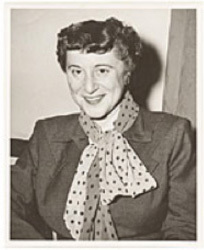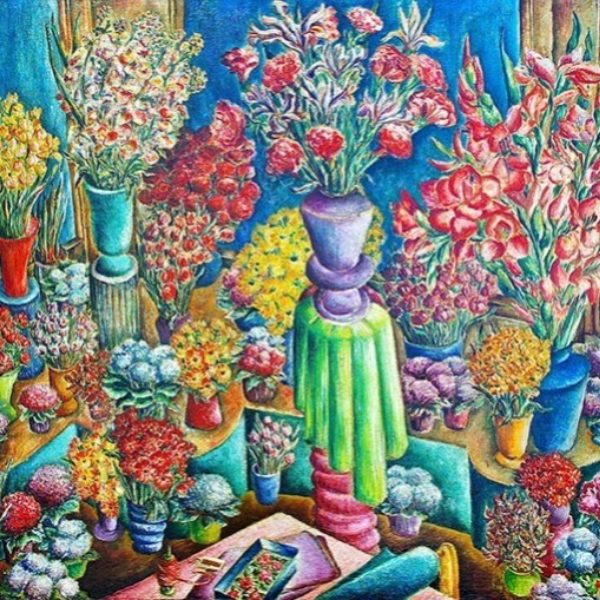
Florence Arquin
b. 1900, New York, NY - d. 1974, New York, NY
Painter, photographer, educator, writer, and critic, Florence Arquin was widely known as an expert in the field of Latin American studies. She was born in New York City in 1900 to Russian parents who hailed from a long line of physicians and chemists. She initially followed in their footsteps, studying medicine—and in particular the influenza outbreak that followed the war. She was transferred to labs at the University of Chicago and came to the city around 1918. After her brother died of meningitis contracted from a patient, her mother forbade her from working in a hospital. Arquin returned to a prior interest in the arts and attended the School of the Art Institute of Chicago (SAIC), graduating with a degree in art education in 1933.
Arquin was committed to education, teaching at public schools in Flossmoor, IL, 1933–36, and serving as art director at the high school in Libertyville, IL, in 1936. From 1935–39, she supervised the easel painting division for the Federal Art Project in Illinois in 1936 and oversaw public relations and art teaching for FAP, 1938–39. She joined the SAIC faculty in 1939 to develop education programs for secondary school students. Meanwhile, her work was included five times in the Art Institute’s Chicago and Vicinity shows from 1934–42, and with the Chicago Society of Artists, in exhibitions in Chicago and New York, ten times between 1934–41.
In the early 1940s, Arquin traveled to Mexico, pursuing postgraduate studies at the National University of Mexico in Mexico City and developing friendships with Diego Rivera and Frida Kahlo. A solo exhibition of her paintings was mounted there in 1943 at the Benjamin Franklin Library. In the introduction to the catalogue, Diego Rivera praised Arquin’s “ardent work and exuberance of style,” explaining, “Florence Arquin sees with every pore of her skin. Her nerves absorb the vibration of color, the inflections of the forms, the quality of the earth, of the air, and of the light, for the purpose of synthesizing all of these in her painting.” This prose aptly captures Arquin’s Untitled (Still life) in the Friedman collection, with its abundance of flowers and vibrant color palette. Arquin repaid the favorable review in her book Diego Rivera: The Shaping of an Artist, 1889–1921 (University of Oklahoma Press, 1971), which details the artist's formative years.
Arquin traveled extensively in South America, the United States, and Europe throughout her life. From 1945 to 1951, she visited Brazil, Bolivia, Peru, and Ecuador as Director of the Kodachrome Slide Project under the sponsorship of the U.S. Department of State. She photographed aspects of life and culture and gave lectures at cultural institutions throughout Latin America and in the United States. The project was part of an effort to provide educational agencies with visual aids to support Latin American studies. Under another State Department grant, duplicates of Arquin’s photographs were sold to institutions and individuals interested in the field of Latin American studies. The collection—more than 25,000 color photographs of Latin American cultural subjects and their European and Moorish sources—was acquired by Florida Atlantic University in 1964, where it was catalogued and organized for educational use.
Florence Arquin died in 1974.
Lisa Meyerowitz
References
Arquin, Florence. Pamphlet P 00737. Ryerson Library. Art Institute of Chicago.
Bulliet, C. J. “Artists of Chicago, Past and Present: No. 88 Florence Arquin.” Chicago Daily News, May 27, 1939.
Rivera, Diego. Foreword to Florence Arquin Exhibition Catalog, Mexico City. March 23, 1943. Florence Arquin Papers, Smithsonian Archives of American Art, http://www.aaa.si.edu/collections/viewer/foreword-to-florence-arquin-exhibition-catalog-1221.
Artist Image: Florence Arquin in polka dot scarf in Mexico, 1951 Feb. / unidentified photographer. Florence Arquin papers, Archives of American Art, Smithsonian Institution.
